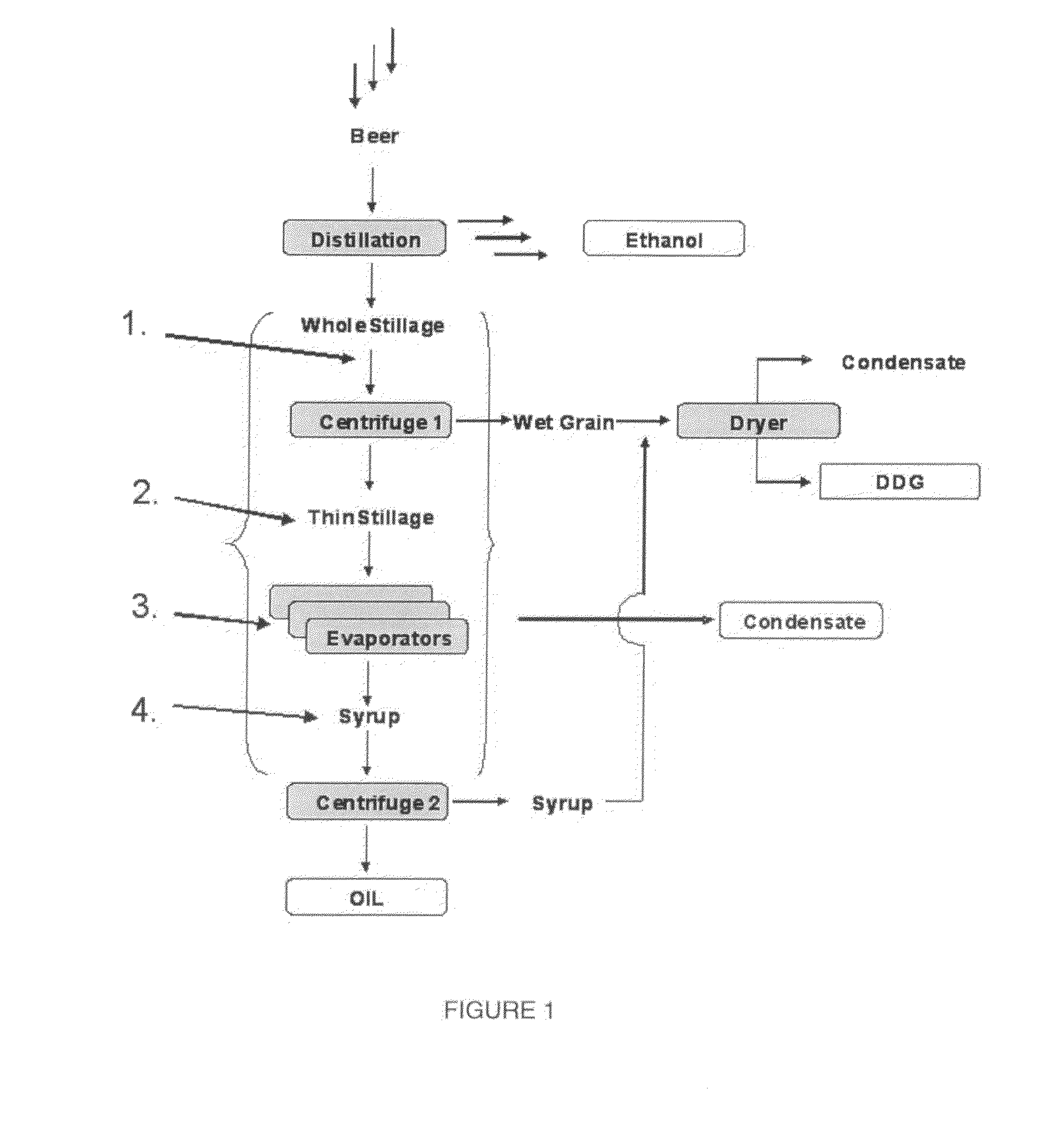Oil extraction aids in grain processing
- Summary
- Abstract
- Description
- Claims
- Application Information
AI Technical Summary
Benefits of technology
Problems solved by technology
Method used
Image
Examples
example 1
[0041]Polysorbate 80 and blends of Polysorbate 80 with hydrophobic silica A and soybean fatty acid methyl esters were added at a dosage of 537 ppm into the syrup feed line on the inlet side of the pump feeding two disk stack centrifuges in a corn to ethanol process. The resulting corn oil production is shown in Table 1. Oil production increase is compared to baseline data obtained from Polysorbate 80.
TABLE 1ComponentComposition (wt %)Polysorbate 80100%90% 86% Soybean Fatty Acid Methyl Ester5%5%Hydrophobic Silica A5%9%Oil Production (gal / min)2.963.073.15Oil Production Increase4%6%
[0042]As shown in Table 1, the addition of hydrophobic silica to the Polysorbate 80 resulted in an increase in oil production. Increasing the concentration of hydrophobic silica from 5% by weight to 9% by weight resulted in additional oil production.
example 2
[0043]Various Polysorbates were added at a dosage of 537 ppm into the syrup feed line on the inlet side of the pump feeding two disk stack centrifuges in a corn to ethanol process. The resulting corn oil production is shown in Table 2.
TABLE 2Oil ProductionComponent(gal / min)Polysorbate 802.98Polysorbate 403.03
[0044]As shown in Table 2, Polysorbate 80 and Polysorbate 40 performed similarly.
example 3
[0045]Polysorbate 80 and blends of Polysorbate 80 with hydrophobic silica and fatty acid methyl esters were added at a dosage of 271 ppm into the syrup feed line on the inlet side of the pump feeding two disk stack centrifuges in a corn to ethanol process. The resulting corn oil production is shown in Table 3. Oil production increase is compared to baseline data obtained from Polysorbate 80.
TABLE 3ComponentComposition (wt %)Polysorbate 8085%80%Soybean Fatty Acid Methyl Ester5%5%Hydrophobic Silica B10%15%Oil Production Increase vs Baseline3%4%
[0046]As shown in Table 3, the addition of hydrophobic silica resulted in additional oil production compared to baseline.
PUM
 Login to View More
Login to View More Abstract
Description
Claims
Application Information
 Login to View More
Login to View More - R&D
- Intellectual Property
- Life Sciences
- Materials
- Tech Scout
- Unparalleled Data Quality
- Higher Quality Content
- 60% Fewer Hallucinations
Browse by: Latest US Patents, China's latest patents, Technical Efficacy Thesaurus, Application Domain, Technology Topic, Popular Technical Reports.
© 2025 PatSnap. All rights reserved.Legal|Privacy policy|Modern Slavery Act Transparency Statement|Sitemap|About US| Contact US: help@patsnap.com

